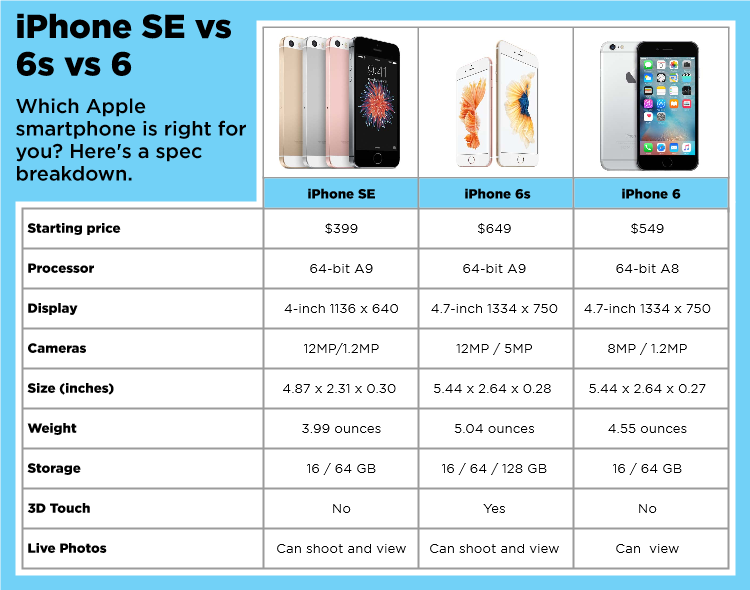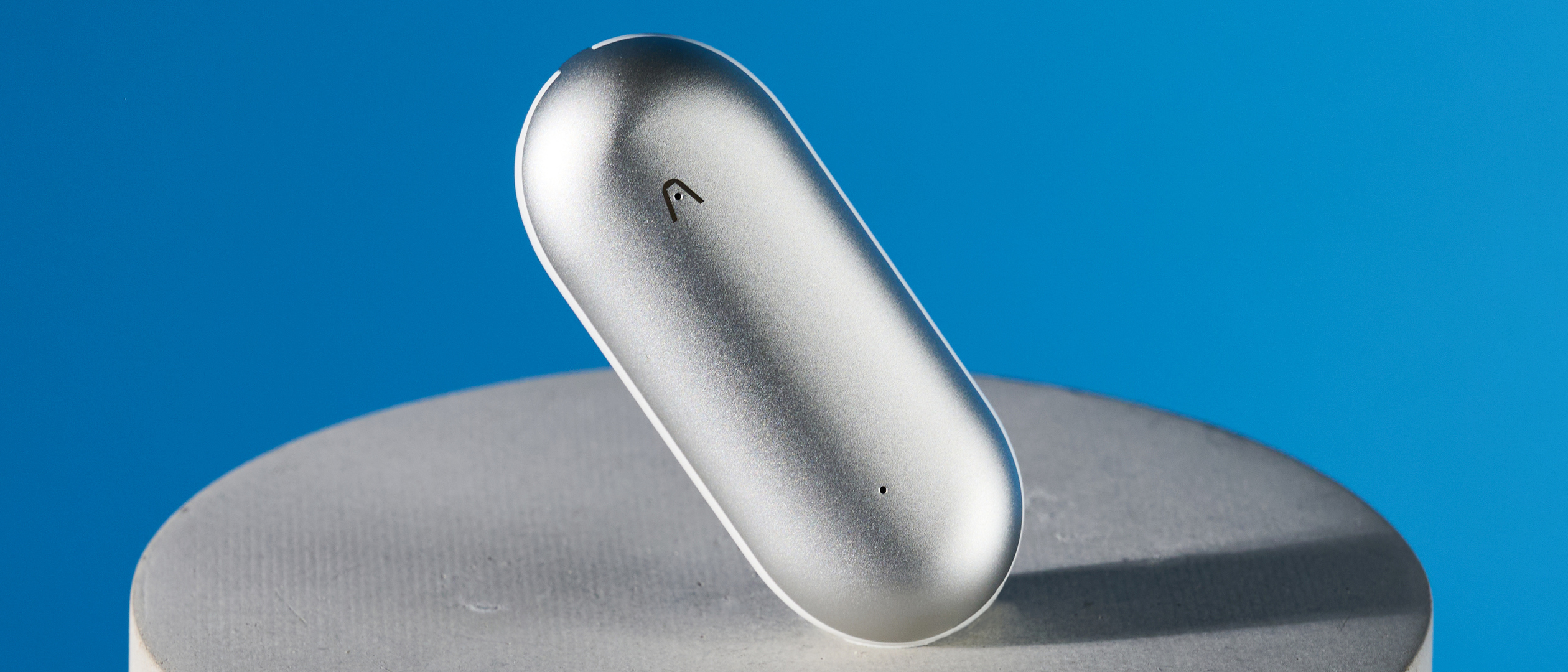iPhone SE vs 6s vs 6: What Should You Buy?
We compare all of Apple's smartphones with sub-5-inch screens to see which one fits your needs.
Size matters. Apple has clearly taken that adage to heart, launching a new compact iPhone designed for smaller hands. The 4-inch iPhone SE replaces the similarly sized iPhone 5s, joining the iPhone 6, 6 Plus, and iPhone 6s and 6s Plus in Apple's smartphone lineup.

If you're deciding on a new iPhone, or wondering whether you should switch to the smaller model, you'll need to know if the new device's petite size is worth the trade-offs in front camera quality and other features. We stack the iPhone SE up against its bigger brothers the iPhone 6s and iPhone 6 to help you decide which Apple phone is right for you.
iPhone SE: Best for Small Hands, Small Budgets
At just $399, the iPhone SE packs the same fast A9 processor and rear 12-megapixel camera as the iPhone 6s. Unlike the iPhone 5s, Apple's new 4-inch phone picks up support for Apple Pay mobile payments and Live Photos, which add motion and video to your images. That makes it a really good deal, and the cheapest iPhone (at launch) to date.

Those with smaller hands will like not having to reach across the wider 4.7-inch screens of the iPhone 6 and 6s; the 4-inch iPhone SE screen will be far easier to navigate. While its display is less sharp than the iPhone 6 and 6s, the iPhone SE's image quality doesn't appear to be poorer than its bigger brothers.
Note that the iPhone SE does not support 3D Touch, so you can't access shortcuts with a deep press or take advantage of various games and apps that utilize the feature.
Another trade-off is the the iPhone SE's 1.2-megapixel front camera, which is less sharp than the iPhone 6s' 5-MP shooter. (At least the iPhone SE can use the phone's screen as a flash to brighten up those selfies.)
On the plus side, the iPhone SE's battery life is significantly better than the iPhone 5s, lasting a strong 8.5 hours on the Tom's Guide 4G LTE web surfing test, compared to just 5:46 for the previous model.
Since it's only available in 16GB and 64GB models, the iPhone SE is not the best choice for shooting tons of 4K video, but the lack of a 128GB option makes sense at this price.
iPhone 6s: Best for 3D Touch and Bigger Screen
The iPhone 6s is the only phone in this trio to boast Apple's cool 3D Touch feature, which detects how hard you're pressing on the screen to summon shortcuts and previews. For example, you can quickly take a selfie by pushing down on the camera app and selecting the Selfie option. Developers are also incorporating 3D Touch into their games and apps.
Like the iPhone SE, the 6s features a zippy A9 processor and 12-MP back camera, but you get a sharper 5-MP selfie cam. The 6s also sports a larger and sharper 4.7-inch display, which is not tough to use with one hand.
Those who want the freedom to keep all their videos, Live Photos and apps on their phones without having to painstakingly go through and delete them every other week will prefer the iPhone 6s, which comes in a 128GB version.
iPhone 6: The Compromised Phone
With an outdated A8 processor and 8-MP rear camera, the iPhone 6 is the aging sibling in the Apple smartphone family. The only reason to get the iPhone 6 is if you want its roomier 4.7-inch display, but don't want to shell out the additional $100 for the iPhone 6s.
At 4.55 ounces, the iPhone 6 is also lighter than the iPhone 6s, although not by much. You'll get the same 1.2-MP front camera on the iPhone 6 as on the iPhone SE, as well as a first-generation fingerprint sensor. The iPhone 6s sports a newer and faster Touch ID reader.
Sign up to get the BEST of Tom's Guide direct to your inbox.
Get instant access to breaking news, the hottest reviews, great deals and helpful tips.
Cherlynn is Deputy Editor, Reviews at Engadget and also leads the site's Google reporting. She graduated with a Master’s in Journalism from Columbia University before joining Tom's Guide and its sister site LaptopMag as a staff writer, where she covered wearables, cameras, laptops, computers and smartphones, among many other subjects.

